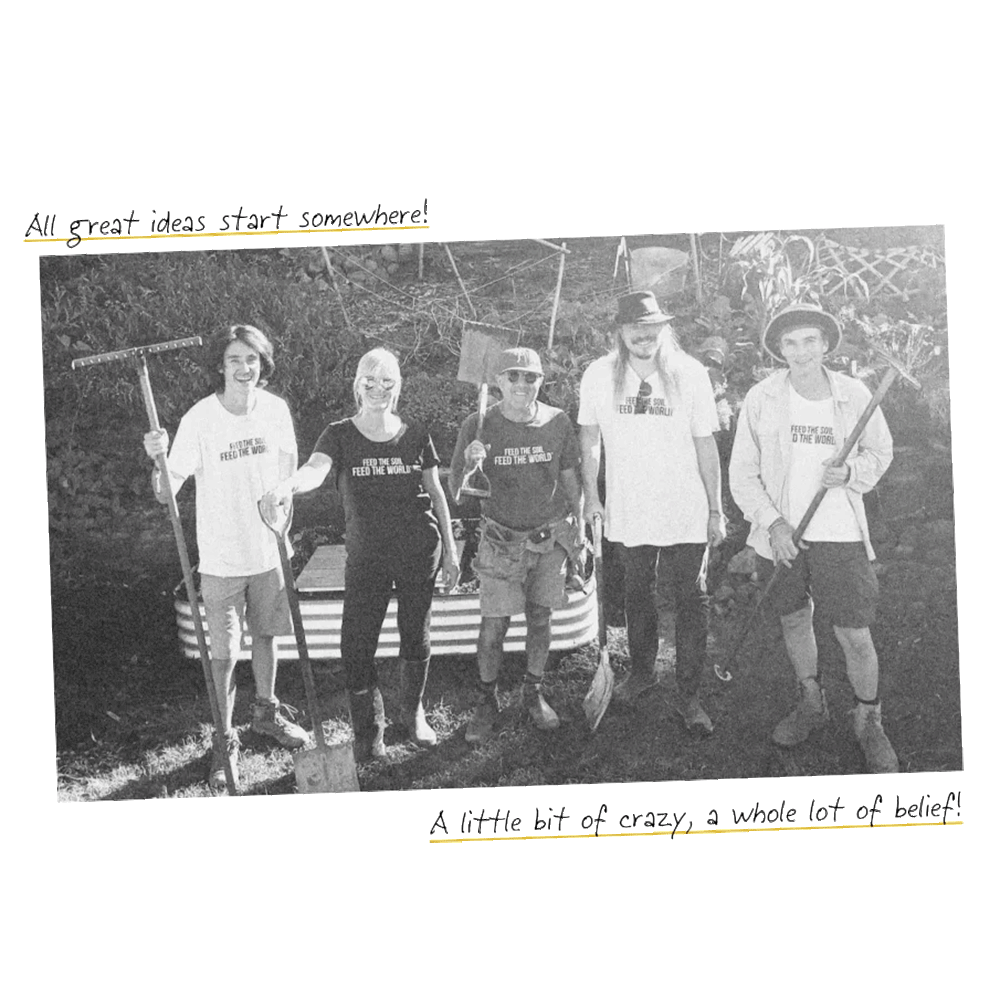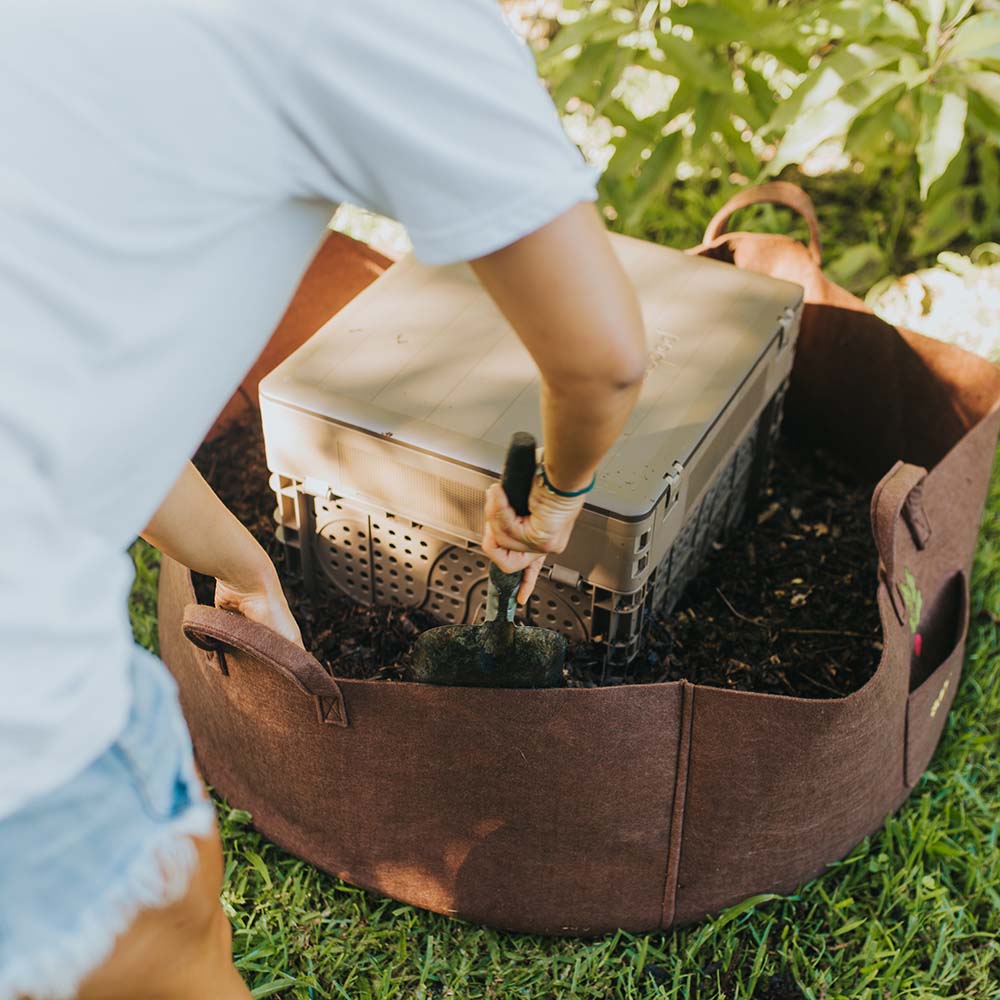Can You Compost Bread
In this article:
Bread is a staple in kitchens and diets around the world. There always seems to be a couple of slices going hard and stale, normally those crusty end pieces that nobody wants to eat! The question asked by many home composters is,
“can you put bread in the compost?”
It’s a great question, because we all know there are some products that have to be avoided or applied with care to your compost bin. Being engaged and vigilant with what you compost will improve the efficiency and effectiveness of the entire process.
In short, yes you can compost bread… but it depends on a few factors, in particular what kind of compost setup you’re using. Bread is an organic material, and all organic materials should be able to go into your compost. There are just a few things you have to keep in mind when composting your bread.
Today we want to talk about those, touching on why it's important to keep bread out of landfill, and what the best composting system is to compost bread.
You'll never have to throw away another slice!

Why Should We Compost Bread?
Like all other food waste from your kitchen, when bread goes to landfill it decomposes slowly. During this process it emits methane, one of the most harmful greenhouse gases out there. It’s around 25-times more potent than carbon dioxide, and a major contributor to global warming.
When you compost your food waste like bread, you’re reducing the pressure on landfill sites and you’re keeping methane out of the atmosphere. What’s more, you’re creating a nutrient-rich organic fertiliser your garden will love!
Is Bread a Green or Brown Composting Material?
You may be surprised to hear that bread is actually considered a ‘green’ when it comes to composting. Green composting material contains nitrogen, while brown composting material contains carbon. Generally most of the food waste coming out of your kitchen is green, while items like paper, dry leaves and grasses, sawdust and straw are brown.
Although brown in colour, bread has a high nitrogen content, which makes it a ‘green’. Nitrogen and carbon are both important fuels for the microorganisms that break down waste and create compost.
Here’s a composting hot tip: Maintaining the right balance of greens and browns is important for composting. The recommended ratio is two to three parts brown to one part green. This can be adjusted as you go - if you find your compost is too wet, for example, you can add more carbon based materials to dry it out a touch.

Can You Compost Mouldy Bread?
We’ve all found that piece of mouldy bread at the back of the bread bin that looks like it's about to grow legs and run away. It doesn’t look like ANYTHING would ever want to go near it, let alone consume it!
Here’s the thing though, you can compost mouldy bread. In fact, it’s a pretty good option for your compost bin! The reason being, bread has already started decomposing, so the entire process will be faster once it's in your compost bin.
If you’re using a vermicomposting setup like Subpod, the worms will be more than happy to devour the mouldy bread. They actually find the fungal material easy to digest because of its soft texture. This is why you don’t often see mould inside your worm farm - because the worms have already enjoyed eating it!
There you have it. Don’t be scared of applying your mouldy bread to your compost bin, particularly if its a worm farm!
Problems with Composting Bread
Food waste warriors aim to keep as much organic waste as possible out of landfill. So it's always reassuring to know when a type of waste can be composted. Composting your leftover or mouldy bread shouldn’t be too problematic, but there are a couple of hurdles you might encounter.
Rodents and Pests
Turns out that rodents and other creatures like bread just as much as humans do! It’s tasty, soft and easy to eat, so if the bread is simple to get to you might find you have some uninvited guests in your backyard feasting on your compost! This is especially true if you have a ‘traditional composting’ pile in your backyard. If you’re composting bread, you’re better off using an enclosed bin or underground composting system. Or just make sure to keep the bread well covered in your compost pile.
Getting the Ratios Right
You can’t just throw a large amount of bread into your compost and expect it to be ok. It’s high in nitrogen, so you need to make sure you're balancing it with the right amount of ‘brown’, carbon-rich material. Too much bread could make your compost too wet, which will hinder the whole process.
Removing Unwanted Related Products
Maybe your bread is coated in cheese, or maybe it was once a sandwich and is still attached to meat products. If you’re vermicomposting, you don’t have to worry too much about these extra ingredients, because your worms can deal with them in small doses. If you have a traditional composting setup, you’re advised to stay away from adding meat and dairy to it.
How to Compost Bread
Conscious composters know you need to apply a bit of thought and consideration before you put a new material into your compost bin. The same goes for bread, so there are definitely a couple of things to think about and do when you’re composting your bread. Here they are:
Choose the Right Compost System
It’s clear there are systems better suited to composting bread, particularly with regards to the problems we mentioned above. A fully enclosed compost bin like Subpod that sits below the surface of the earth will be tricky for pests and rodents to access. Subpod is a vermicomposting setup which relies on aerobic activity to decompose food waste. This is less smelly than the anaerobic composting of traditional systems. If you’re looking for an odour and pest-free system for composting your bread, Subpod is the way to go.
Process the Bread Correctly
Firstly check that there isn't any plastic or metal from packaging attached to the bread, as you don’t want this going into your compost bin. Then, rip the bread up into smaller pieces. This will provide for surface area for your worms and microbes to get to work on, so the whole process will be more efficient.
Place it in the Centre of Your Compost
If you have an open compost pile, dig into the centre of it and place your ripped up bread there. It’s less accessible to pests and rodents, plus the hotter temperatures in the centre will speed up the decomposition. If you’re using a Subpod, this isn’t necessary because there’s minimal chance of attracting pests.
Cover Your Bread
Use a ‘brown’, carbon-heavy material like sawdust to cover up your bread. This will help with the balance of carbon and nitrogen in your compost, while also making it less obvious to pests. If you use a Subpod, it’s wise to mix brown material with your food waste whenever you add it to your worm farm. After adding, aerate your compost to mix everything together and keep the structure optimised. The added air will help with the composting process.
Choose Subpod to Compost Your Bread

Subpod is the composting system that just makes sense, whether you’re composting bread or any other food waste. Subpod is an in-ground vermicomposting system, so it sits semi-submerged in your garden, with the lid protruding above the surface. The lid is also a garden seat - the best seat in the house after a good gardening session!
Lifting up the lid to your Subpod reveals the massive family of worms and microbes living inside. They’re waiting for your food waste, which you can feed them on a daily basis. Worms are really efficient compost makers, and they love bread! So any bread you put in will be turned into nutritious compost in a surprisingly short time!
The Smell Free and Pest Free Solution
Subpod is a neighbour-friendly solution because it doesn’t create the odours associated with a traditional compost pile in the garden. The aerobic composting method it employs doesn’t create odours, and the enclosed Subpod contains any smells that are made.
An added benefit of this is it doesn’t attract pests or rodents. Even if they stumble across your Subpod, its robust design will keep them out. They’ll move on to easier pickings and you’ll maintain your solid neighbourly relations!
Beginner Friendly
If you’re just starting off on your compost journey, the beginner-friendly solution is Subpod. Setup will take you a few minutes, and once you’ve installed it in your outdoor space home it’s easy to use and maintain. Home composting will soon become an everyday part of your life! You’ll never have to throw a crust of bread into landfill again!





